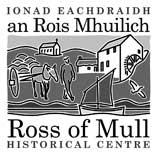
A Tiny Treasure
romhc Friday, 13 April 2018
An arrowhead was discovered on Ardtun on low-quality crofting land, typical of Mull, usually thick with bracken. The area had been cleared of bracken during the building of a small wooden shed, and the regular walking backwards and forwards over a few months had scuffed the surface of the soil. The flint arrowhead was spotted lying on the surface of the soil one day, in summer 2014. That particlar area would not have been cleared of bracken, down to soil level, for many years previously. The location was Coille Challtuinn croft, Achnahard, Ardtun, near Bunessan and belongs to friends, Celia Compton and Phil Yielder. Several people were very excited to be shown the arrowhead, as was a curator at the National Museum of Scotland, in Edinburgh. It was taken to the Treasure Trove department of the museum, and a finder’s form completed, with OS map grid reference, and details of how it was found. A satellite map application pinpointed the location more precisely. Dr Alison Sheridan, Principal Curator of Early Prehistory at the National Museum of Scotland, thought that it was of intrinsic archaeological interest as an example of a Chalcolithic or Early Bronze Age barbed-and-tanged arrowhead, dating to somewhere between 2500 and 1500 BC. This tiny treasure is displayed at the Historical Centre
